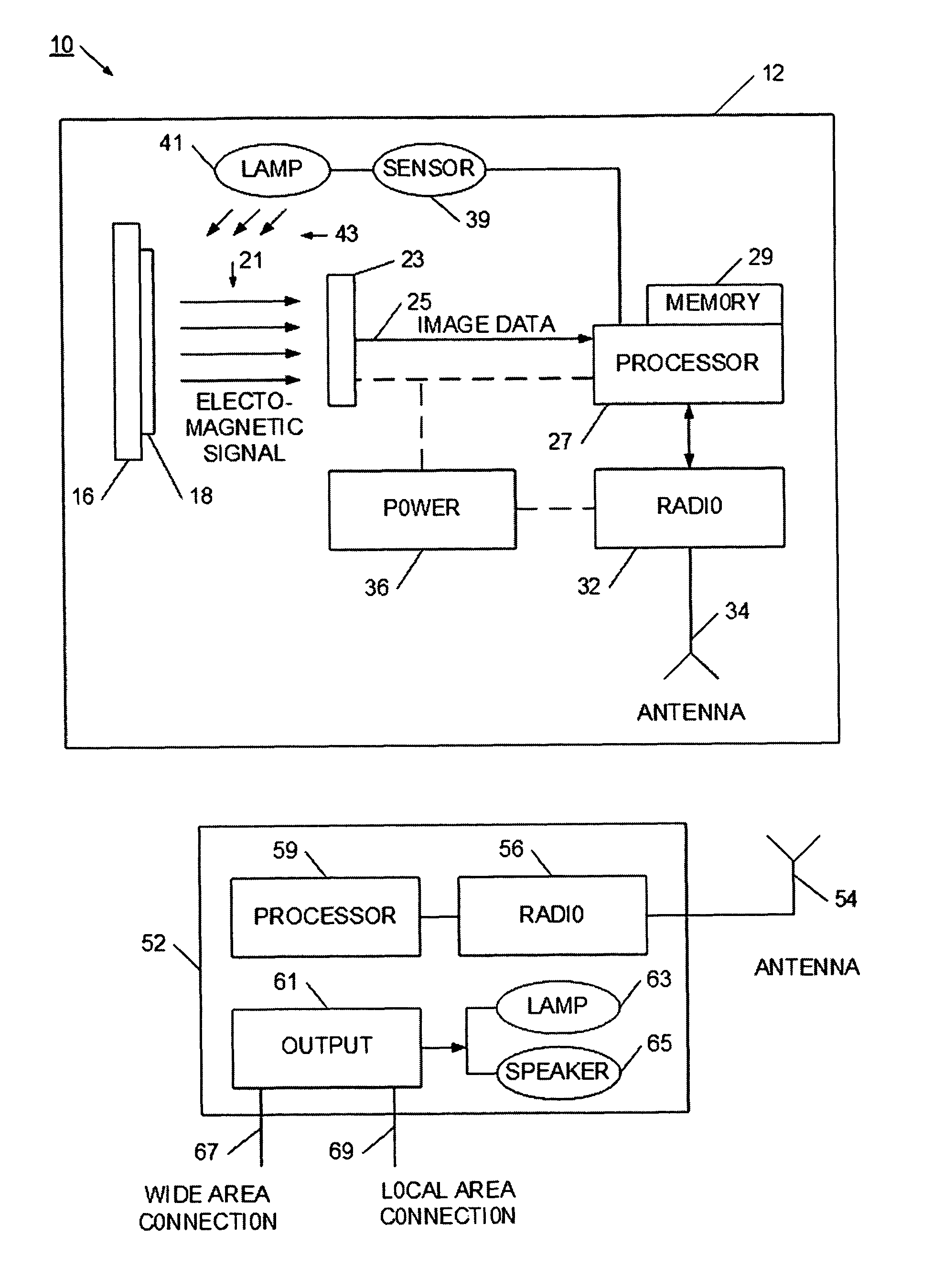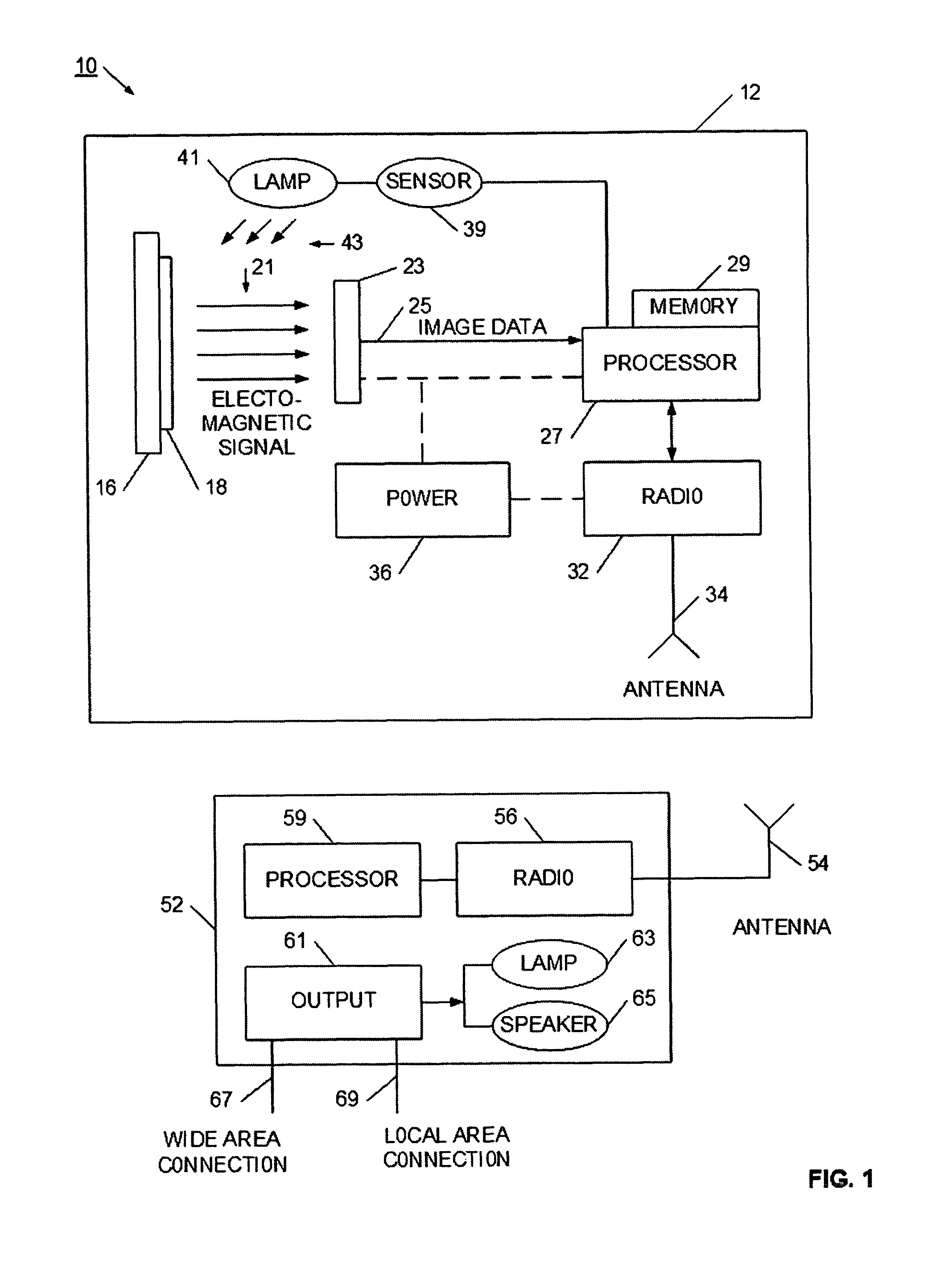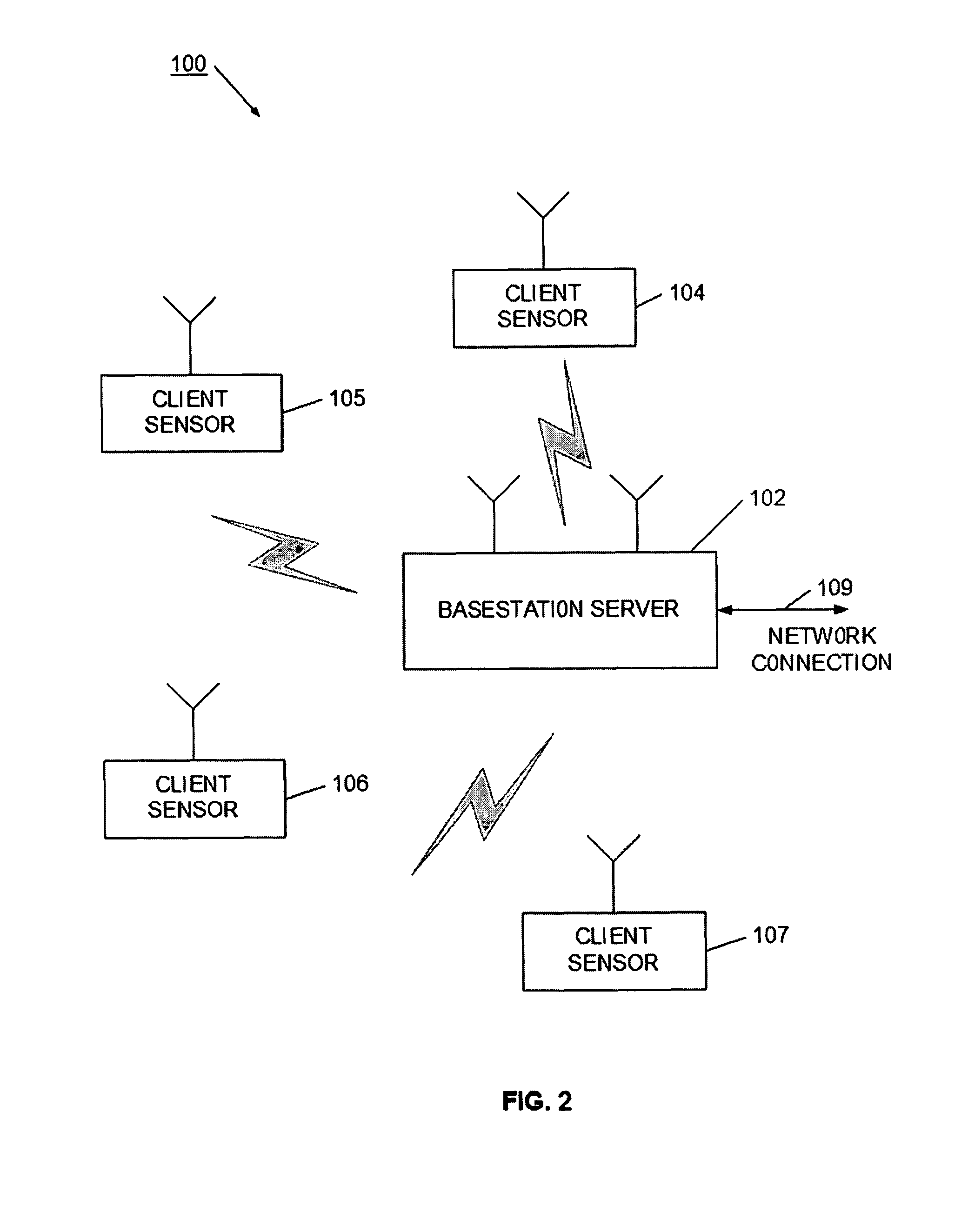Remote biological, chemical and explosive detector
a biological, chemical and explosive agent technology, applied in the field of detection devices and methods, can solve the problems of inability to fully protect a large area, delay can have severe consequences, and the manual detection process is highly intrusive, so as to achieve effective alerts, reduce the effect of invasiveness and rapid deployment and operation
- Summary
- Abstract
- Description
- Claims
- Application Information
AI Technical Summary
Benefits of technology
Problems solved by technology
Method used
Image
Examples
Embodiment Construction
[0017]Referring now to FIG. 1, an autonomous sensing system 10 is illustrated. Sensing system 10 enables a remote detector 12 to automatically and autonomously detect a target agent. For example, the detector 12 may be set to detect particular biological, chemical, explosive, or other target agents. When the target agent is detected, the detector 12 may send an alert to a base station 52. In this way, a remote detector is able to autonomously provide information regarding the presence of a target agent. Also, the detector 12 has sufficient intelligence and processing power to determine when the agent is present and to classify the threat or urgency the agent presents. For example, the detector may be set to detect the presence of a toxic gas. In the presence of the gas, the detector will be able to alert that the toxic gas is present, as well as classify its concentration to set the urgency or threat level. In this way, a much more urgent alert may be transmitted to the base station...
PUM
| Property | Measurement | Unit |
|---|---|---|
| optical property | aaaaa | aaaaa |
| frequency | aaaaa | aaaaa |
| radio frequency | aaaaa | aaaaa |
Abstract
Description
Claims
Application Information
 Login to View More
Login to View More - R&D
- Intellectual Property
- Life Sciences
- Materials
- Tech Scout
- Unparalleled Data Quality
- Higher Quality Content
- 60% Fewer Hallucinations
Browse by: Latest US Patents, China's latest patents, Technical Efficacy Thesaurus, Application Domain, Technology Topic, Popular Technical Reports.
© 2025 PatSnap. All rights reserved.Legal|Privacy policy|Modern Slavery Act Transparency Statement|Sitemap|About US| Contact US: help@patsnap.com



